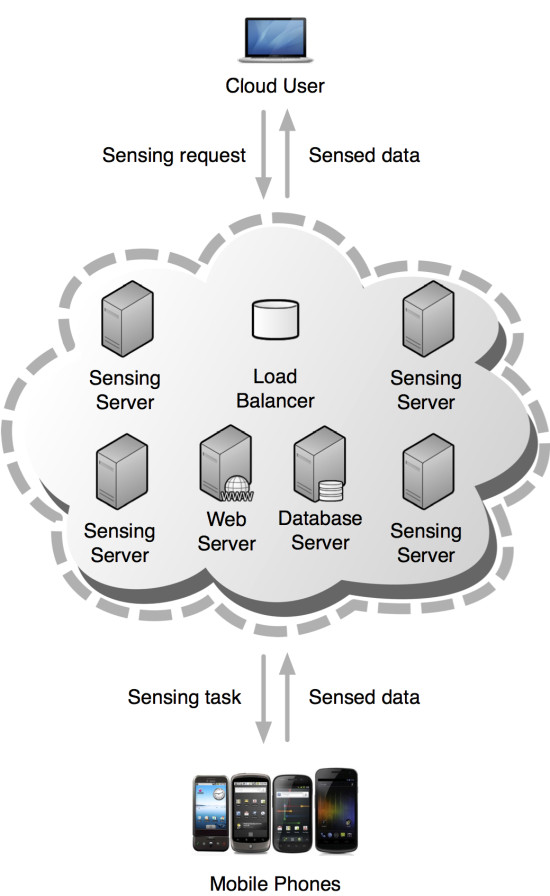View the full paper here: Sensing as a Service: Challenges, Solutions and Future Directions
We propose to leverage emerging cloud computing model to provide various sensing services using mobile phones for a large number of cloud users and introduce a new concept: Sensing as a Service (S2aaS). In an S2aaS cloud, multiple sensing servers (as shown in the figure) can be deployed to handle sensing requests from different locations. When a cloud user initiates a sensing request through a web front-end from either a mobile phone or a computer (desktop/laptop), the request will be forwarded to a sensing server which will then push the request to a subset of mobile phones that happen to be in the area of interest. The corresponding sensing task will be fulfilled by these mobile phones. The sensed data will then be collected by a sensing server, stored in the database and returned to the cloud user who requests the service. An interesting feature of such a system is that a mobile phone user (or simply mobile user) can be not only a cloud (service) user who can request sensing services from the cloud but also a service provider who fulfills sensing tasks according to sensing requests from other mobile users.
An S2aaS cloud needs to meet the following requirements:
- It must be able to support various mobile phone sensing applications on different smartphone platform.
- It must be energy-efficient.
- It must have effective incentive mechanisms that can be used to attract mobile users to participate in sensing activities.
